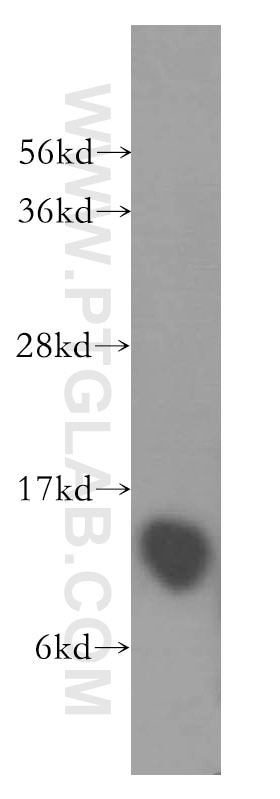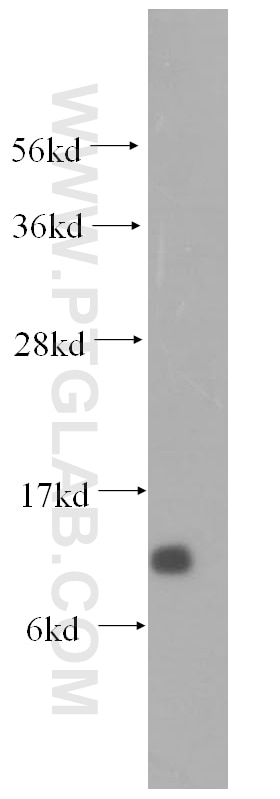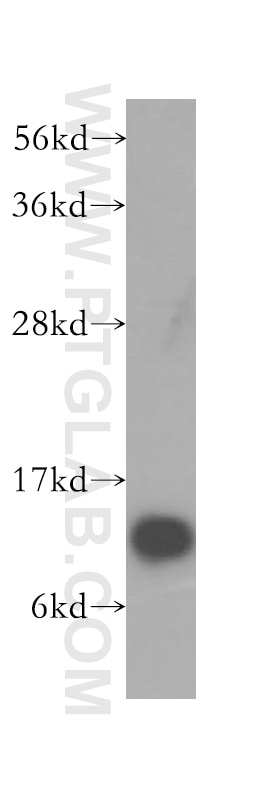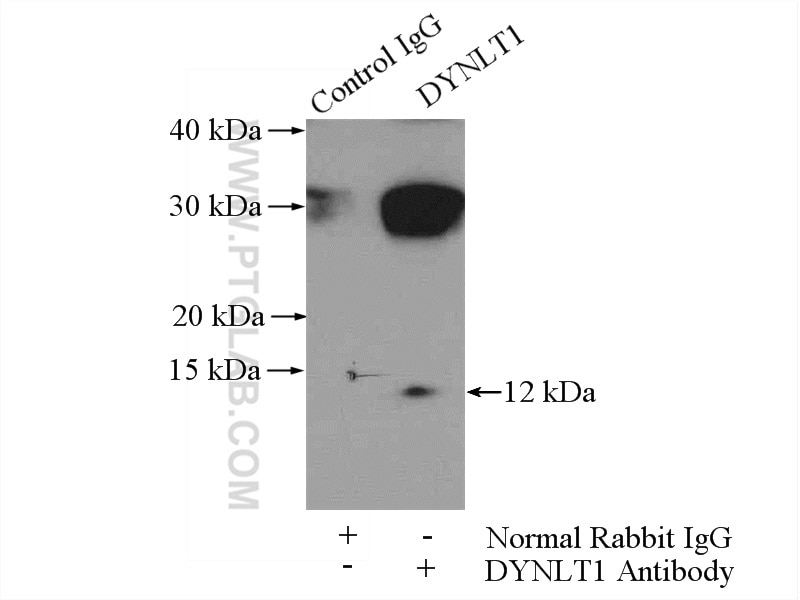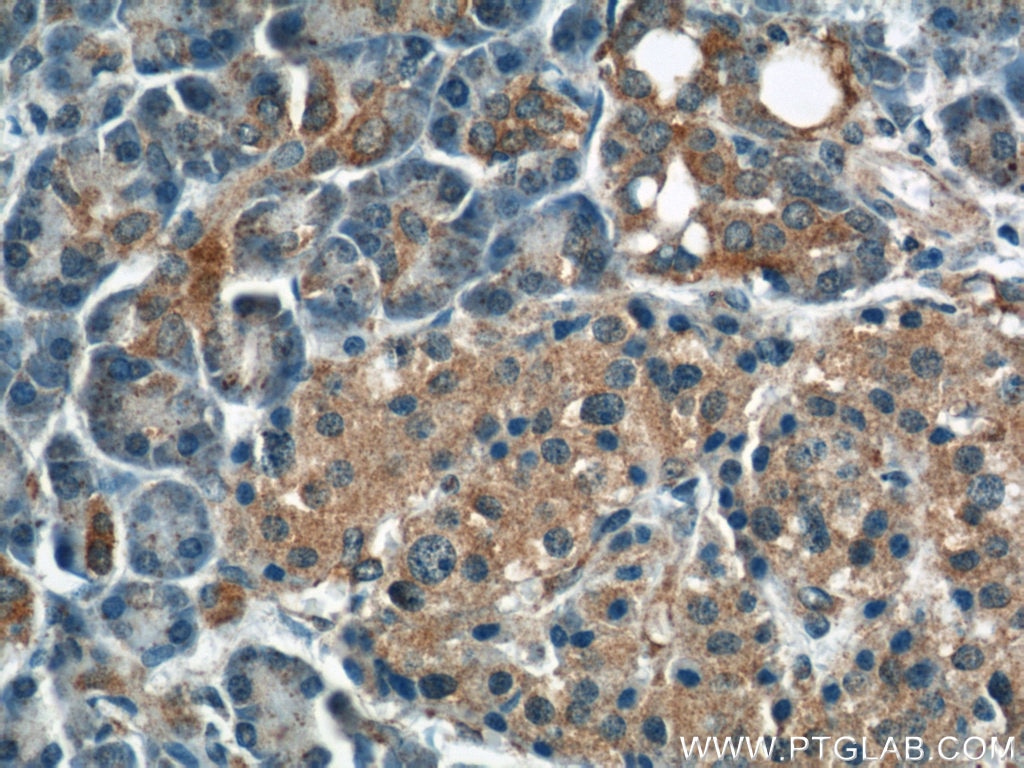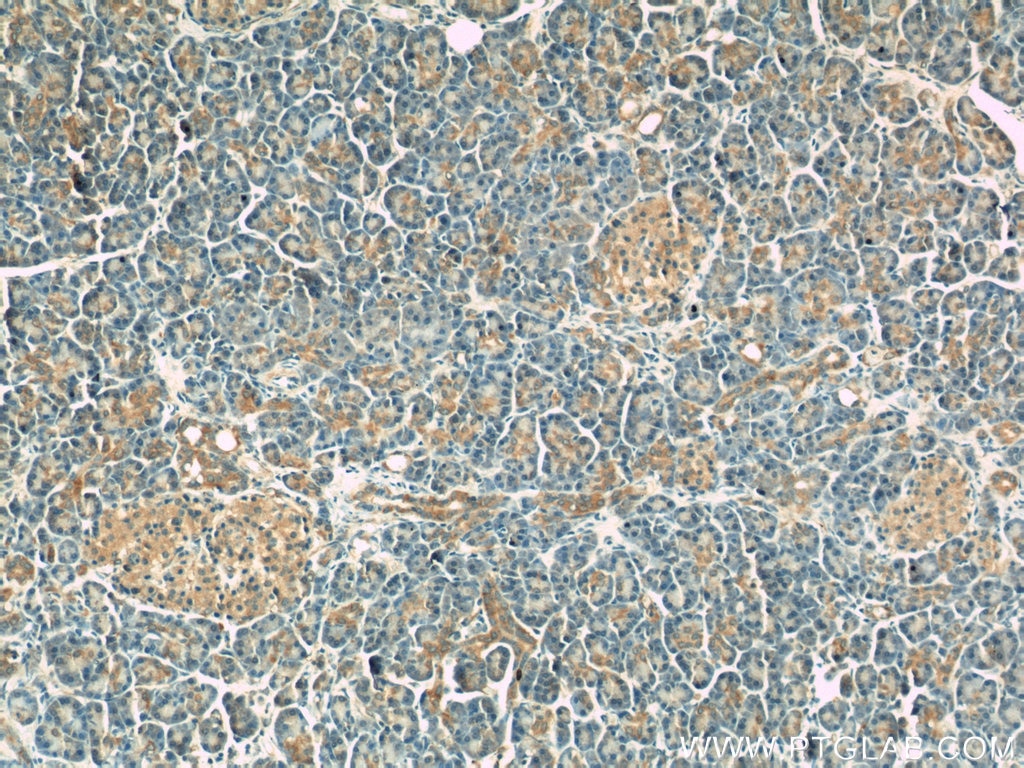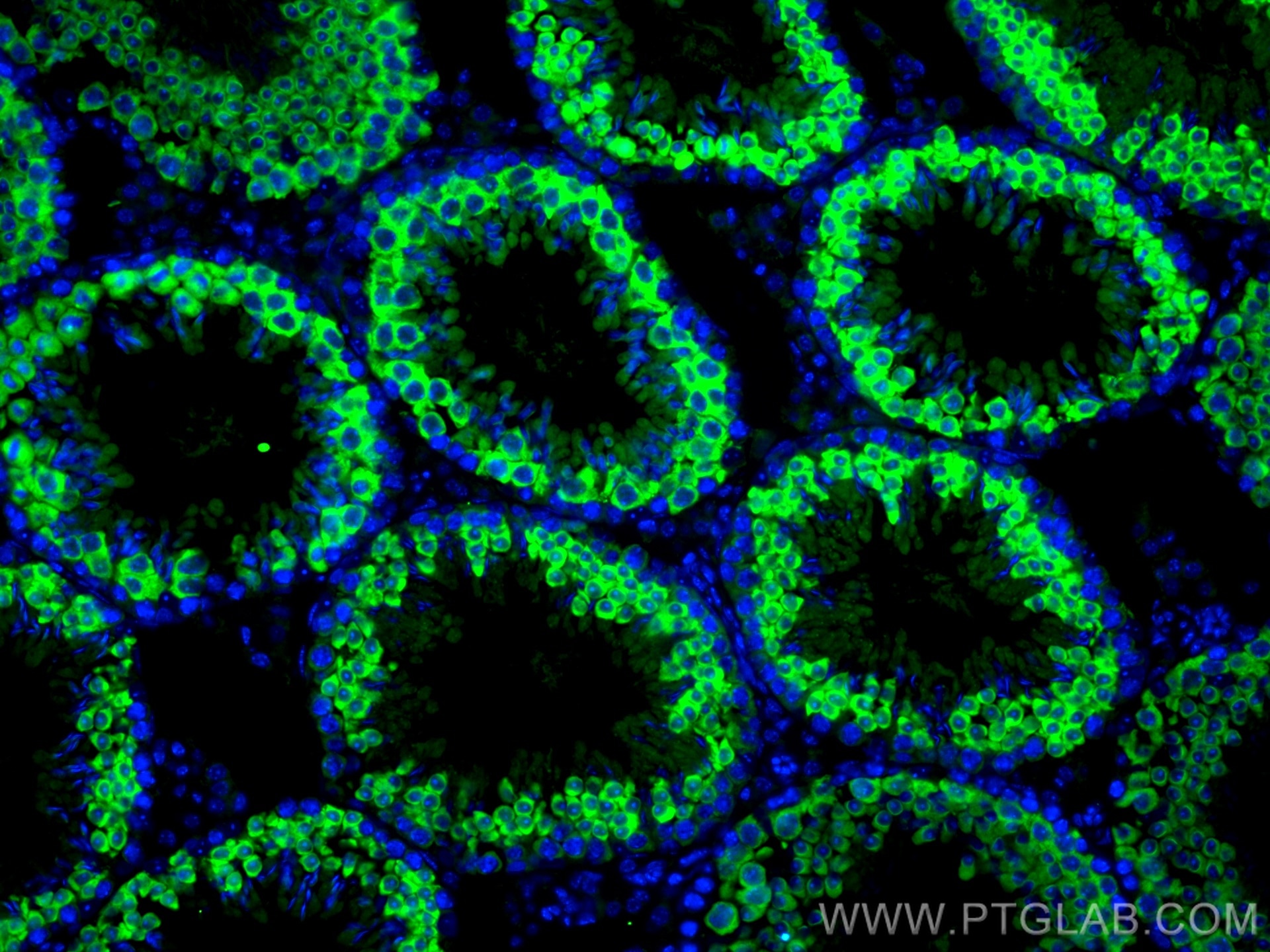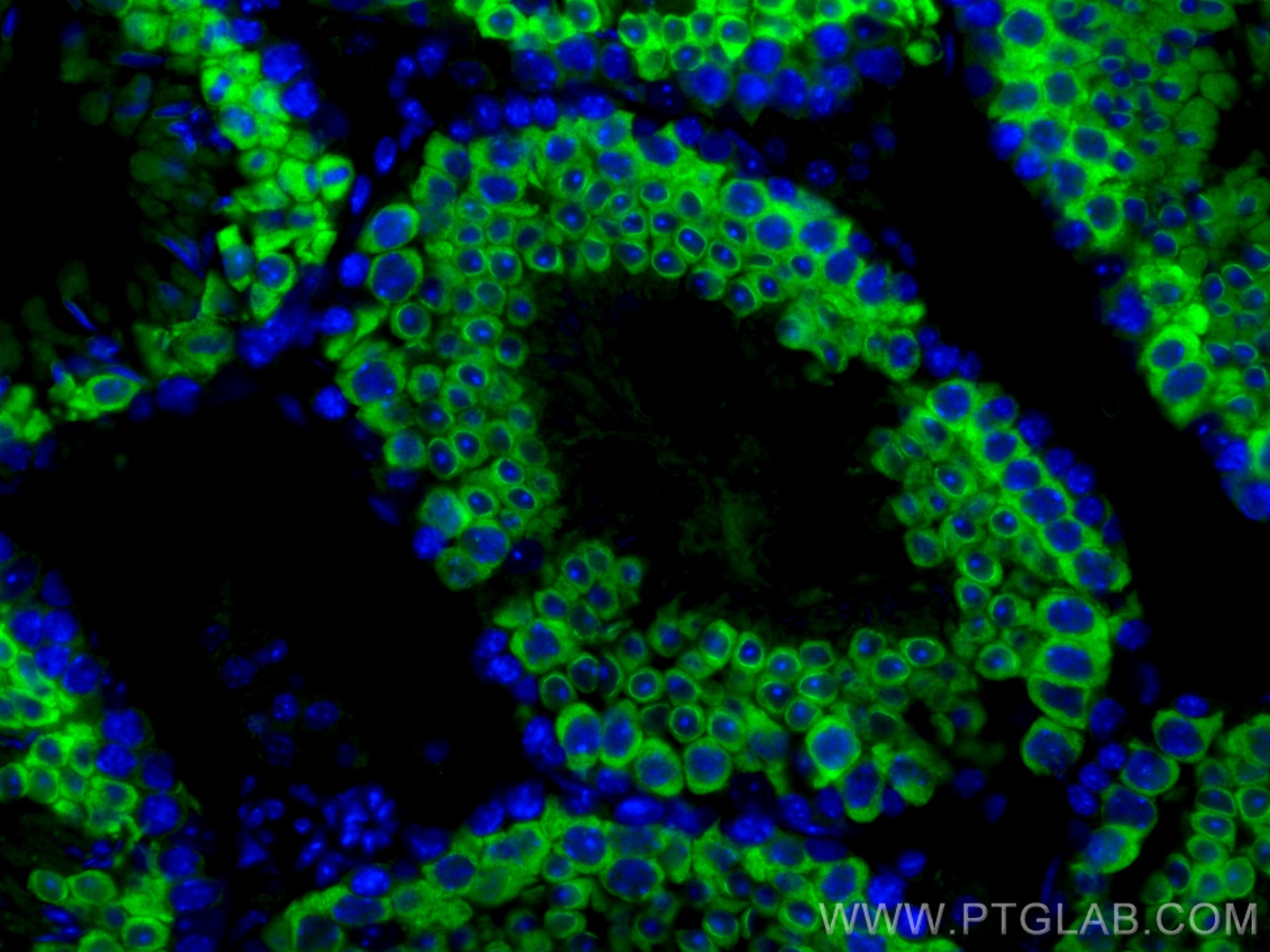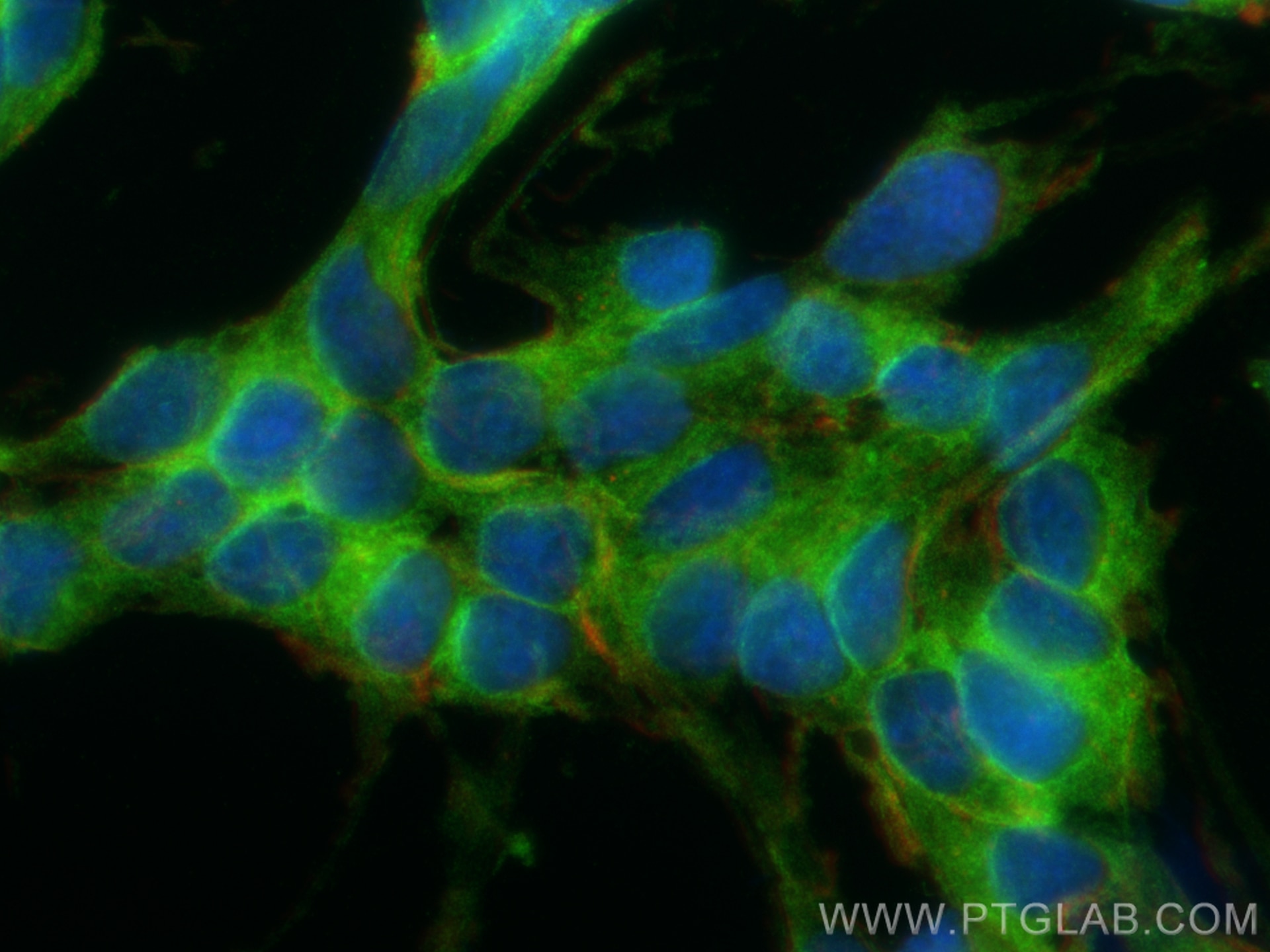- Phare
- Validé par KD/KO
Anticorps Polyclonal de lapin anti-DYNLT1
DYNLT1 Polyclonal Antibody for WB, IHC, IF/ICC, IF-P, IP, ELISA
Hôte / Isotype
Lapin / IgG
Réactivité testée
Humain, rat, souris
Applications
WB, IHC, IF/ICC, IF-P, IP, ELISA
Conjugaison
Non conjugué
N° de cat : 11954-1-AP
Synonymes
Galerie de données de validation
Applications testées
| Résultats positifs en WB | tissu cérébral humain, cellules Sp2/0, tissu cardiaque humain |
| Résultats positifs en IP | tissu de muscle squelettique de souris |
| Résultats positifs en IHC | tissu pancréatique humain il est suggéré de démasquer l'antigène avec un tampon de TE buffer pH 9.0; (*) À défaut, 'le démasquage de l'antigène peut être 'effectué avec un tampon citrate pH 6,0. |
| Résultats positifs en IF-P | tissu testiculaire de souris, |
| Résultats positifs en IF/ICC | cellules SH-SY5Y, |
Dilution recommandée
| Application | Dilution |
|---|---|
| Western Blot (WB) | WB : 1:300-1:600 |
| Immunoprécipitation (IP) | IP : 0.5-4.0 ug for 1.0-3.0 mg of total protein lysate |
| Immunohistochimie (IHC) | IHC : 1:20-1:200 |
| Immunofluorescence (IF)-P | IF-P : 1:50-1:500 |
| Immunofluorescence (IF)/ICC | IF/ICC : 1:50-1:500 |
| It is recommended that this reagent should be titrated in each testing system to obtain optimal results. | |
| Sample-dependent, check data in validation data gallery | |
Applications publiées
| KD/KO | See 3 publications below |
| WB | See 7 publications below |
| IHC | See 3 publications below |
| IF | See 4 publications below |
Informations sur le produit
11954-1-AP cible DYNLT1 dans les applications de WB, IHC, IF/ICC, IF-P, IP, ELISA et montre une réactivité avec des échantillons Humain, rat, souris
| Réactivité | Humain, rat, souris |
| Réactivité citée | Humain, souris |
| Hôte / Isotype | Lapin / IgG |
| Clonalité | Polyclonal |
| Type | Anticorps |
| Immunogène | DYNLT1 Protéine recombinante Ag2557 |
| Nom complet | dynein, light chain, Tctex-type 1 |
| Masse moléculaire calculée | 113 aa, 12 kDa |
| Poids moléculaire observé | 12 kDa |
| Numéro d’acquisition GenBank | BC029412 |
| Symbole du gène | DYNLT1 |
| Identification du gène (NCBI) | 6993 |
| Conjugaison | Non conjugué |
| Forme | Liquide |
| Méthode de purification | Purification par affinité contre l'antigène |
| Tampon de stockage | PBS with 0.02% sodium azide and 50% glycerol |
| Conditions de stockage | Stocker à -20°C. Stable pendant un an après l'expédition. L'aliquotage n'est pas nécessaire pour le stockage à -20oC Les 20ul contiennent 0,1% de BSA. |
Informations générales
DYNLT (or Tctex-1) was originally described as a light chain component of the dynein motor complex. Tctex-1 also has several dynein-independent functions, including roles in G protein signaling activation and neuronal growth. Tctex-1 is selectively enriched in proliferating neural progenitors of both embryonic and adult brains. Genetic knockdown of Tctex-1 in radial precursors promoted neurogenesis, indicating its implication in regulation of cortical neurogenesis. (Pubmed: 19448628)
Protocole
| Product Specific Protocols | |
|---|---|
| WB protocol for DYNLT1 antibody 11954-1-AP | Download protocol |
| IHC protocol for DYNLT1 antibody 11954-1-AP | Download protocol |
| IF protocol for DYNLT1 antibody 11954-1-AP | Download protocol |
| IP protocol for DYNLT1 antibody 11954-1-AP | Download protocol |
| Standard Protocols | |
|---|---|
| Click here to view our Standard Protocols |
Publications
| Species | Application | Title |
|---|---|---|
Nanomicro Lett Molecular Mechanisms of Intracellular Delivery of Nanoparticles Monitored by an Enzyme-Induced Proximity Labeling | ||
Nat Neurosci Lfc and Tctex-1 regulate the genesis of neurons from cortical precursor cells.
| ||
Cell Res Dlic1 deficiency impairs ciliogenesis of photoreceptors by destabilizing dynein. | ||
J Cell Biol Ndel1 suppresses ciliogenesis in proliferating cells by regulating the trichoplein-Aurora A pathway.
| ||
Cancers (Basel) Dynein Light Chain Protein Tctex1: A Novel Prognostic Marker and Molecular Mediator in Glioblastoma. | ||
Biochem Pharmacol Cannabinoid receptor-2 expression modulates Gβ1γ2 protein interaction with the activator of G protein signalling 2/dynein light chain protein Tctex-1. |
